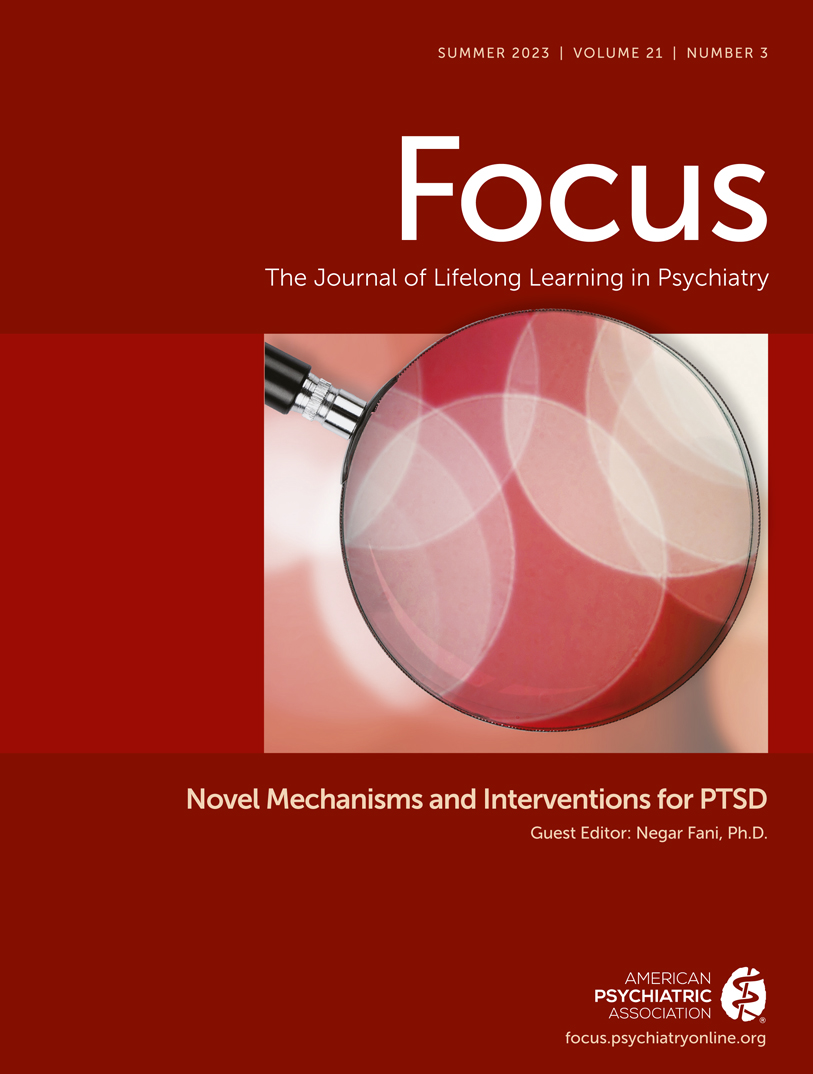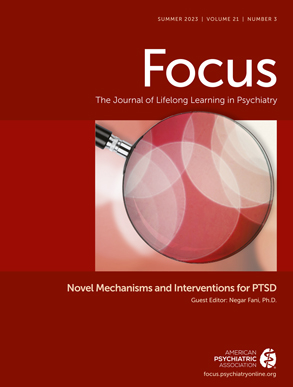A number of recent meta-analyses (
70–
72) have examined whether available evidence supports the use of ketamine for PTSD. Overall, there appears to be evidence suggesting that ketamine treatment results in rapid improvement of PTSD symptoms among certain individuals with PTSD. Importantly, in all of the studies that have been completed thus far, there have been no reports of serious adverse events, and the treatment has been relatively safe and well tolerated (
43–
45). Still, there are important practical considerations when considering the translation of these studies to the community. For example, both the Feder et al. studies and the Abdallah et al. study excluded individuals with significant substance use disorders or psychotic symptoms. Therefore, how ketamine treatment may affect individuals with PTSD and these comorbid conditions remains unknown. This is a practical concern, because it is thought that 19%–52% of individuals with PTSD have a comorbid substance use disorder (
73) and in certain populations, such as veterans, this number may be even higher (
74). Future studies exploring the role of substance abuse in responsiveness to ketamine for PTSD would be useful but likely difficult to perform. In addition, future studies should address the role of specific trauma-exposed populations and explore whether ketamine may be helpful for nonfear-related symptomatology, such as reward processing deficits that have been reported in PTSD (
75). Notably, there is some evidence from a naturalistic study of patients with treatment-resistant depression (
76) suggesting that individuals with childhood maltreatment and trauma have an enhanced response to ketamine treatment. Still, there are reasons to be hopeful that ketamine treatment could represent a major step forward in the treatment of PTSD. Specifically, there is active research examining whether the combination of ketamine with certain psychotherapies may work synergistically to improve PTSD symptoms, which could represent the future of PTSD treatment if found to be successful (clinicaltrials.gov, NCT04560660, NCT04889664, NCT05737693). Mechanistic studies among humans and in animal models suggest the potential for synergy between these interventions, given the shared action of both interventions on the connectivity between the amygdala and the PFC. A better understanding of the mechanisms behind the effect of ketamine in PTSD would also benefit the field.

